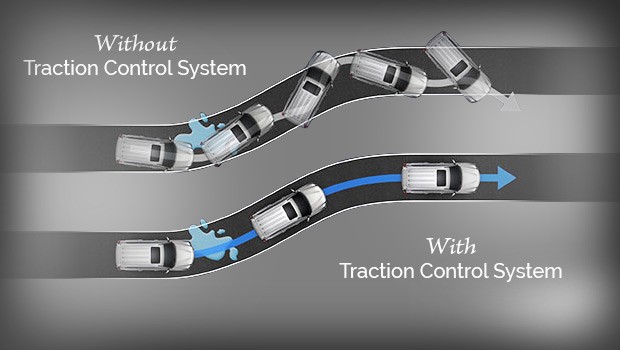Modern automotive technology is rapidly advancing. While innovations like electric and self-driving cars often dominate headlines, crucial safety systems in gasoline vehicles deserve equal attention. Vehicle Stability Assist (VSA), especially in brands like Honda, represents such a vital advancement, significantly enhancing driving safety and experience. Electronic stability and traction control systems, including VSA, are widely recognized for their role in decreasing road accidents, particularly under challenging driving conditions. It’s a standard feature in most contemporary Honda models, underscoring its importance in modern vehicles.
Decoding VSA: Vehicle Stability Assist Explained
VSA, short for Vehicle Stability Assist, is an electronic stability control system. Its primary function is to ensure the car maintains directional stability during cornering maneuvers. The system is particularly adept at detecting and mitigating understeer or oversteer, scenarios that can lead to loss of control. VSA proves invaluable when a vehicle’s wheels encounter varying levels of traction – a common situation on uneven or slippery surfaces that can typically result in skidding or loss of control.
The VSA system is engineered to activate in potentially hazardous driving conditions. These conditions can arise from adverse weather, such as rain or snow, loose road surfaces like gravel, or when a driver is navigating a corner at excessive speed. Beyond cornering, VSA also aids in maintaining smooth and controlled acceleration, especially when driving on slippery terrains or steep inclines, preventing wheel spin and ensuring forward momentum.
Technically, VSA operates by intelligently managing engine output and applying braking force to individual wheels as needed. By selectively intervening in these ways, VSA enhances traction and grants the driver greater command over the vehicle, contributing to safer and more predictable handling.
 Understanding Traction Control System and its Capabilities
Understanding Traction Control System and its Capabilities
Interpreting Your Honda’s VSA Light Signals
Understanding the VSA indicator lights on your Honda’s dashboard is essential for drivers. These lights communicate the system’s status and can alert you to different situations.
Blinking VSA Light: System in Action
If you observe the VSA light blinking on your instrument panel while driving, it’s generally not a cause for alarm. A flashing VSA light indicates that the Vehicle Stability Assist system is actively engaged. This means VSA has detected a situation where vehicle stability is compromised and is currently working to help you maintain control. When the system is actively operating, drivers might perceive subtle alterations in vehicle behavior, which are all part of the VSA system working to ensure safety. These can include:
- Reduced Accelerator Response: You might notice that pressing the accelerator pedal doesn’t yield the expected increase in engine power. This is VSA momentarily limiting engine output to regain stability.
- Engine Power Modulation: The engine’s power output may decrease momentarily, even without you reducing pressure on the accelerator. This adjustment is part of VSA’s strategy to enhance vehicle stability.
- Automatic Braking Application: VSA might apply brakes automatically to one or more wheels. This intervention is typically subtle and shouldn’t feel abrupt, designed to correct the vehicle’s path.
While VSA is a highly effective driver aid, it’s important to remember that it’s not a substitute for responsible driving. Frequent VSA activation, indicated by a blinking light, could suggest that the vehicle is being driven at or beyond its limits for the prevailing conditions. Adjusting driving habits to suit the conditions is always advisable, even with VSA.
Solid VSA Activation Light: System Disabled
In contrast to a blinking light, a VSA activation indicator that is continuously illuminated, rather than flashing, usually signifies that the VSA system has been manually deactivated. Honda vehicles often include a switch on the console that allows drivers to turn the VSA system off. If the light is solid, check if the system was inadvertently switched off. Reactivating the VSA system via the console switch should typically turn off this solid indicator light, restoring the system’s functionality.
Solid VSA System Indicator Light: Potential Issue
It’s crucial to differentiate between the VSA activation light and the VSA system indicator light. If the VSA System Indicator light illuminates and remains constantly lit, it signals a potential malfunction within the VSA system itself. This is a warning that requires attention. If this light appears, the recommended first step is to safely pull over to the side of the road when it is safe to do so, and turn off the car’s engine. After a brief pause, restart the engine. This action may reset the system and, in some cases, the warning light might disappear. However, if the VSA System Indicator light reappears after restarting, it indicates a persistent issue that needs professional diagnosis. In such cases, it’s advisable to schedule a service appointment for a thorough inspection to identify and rectify the fault.
While driving with a lit VSA System Indicator light is generally considered safe in the short term, it’s important to recognize that the Vehicle Stability Assist system will not be operational. Consequently, the safety net that VSA provides in challenging driving situations will be absent. Until the issue is resolved, exercising extra caution and adopting a more conservative driving approach is recommended to compensate for the lack of VSA protection.
For any concerns or issues related to your Honda’s VSA system, whether it’s understanding the indicator lights or addressing a system malfunction, consulting with a certified service department is always a prudent step to ensure your vehicle’s safety systems are functioning correctly.
